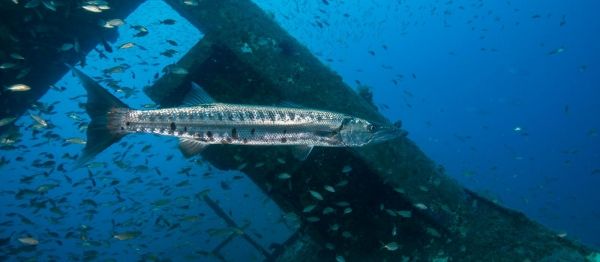Acting like high-rise timeshares in the sea, shipwrecks and other artificial reefs can support dense populations of sharks, mackerels, barracudas, jacks and other large migratory marine predators essential to ocean health, according to a new study at 30 sites along the North Carolina coast.
Predator densities were up to five times larger at the 14 artificial reefs surveyed in the study than at the 16 nearby natural reefs that also were surveyed
Shipwrecks, especially those that rose between 4 and 10 meters up into the water column, were by far the fishes’ favorite. At some sites, they supported predator densities up to 11 times larger than natural reefs or low-profile artificial reefs made of concrete.
“These finding tell us two important things. One is that artificial reefs can support large predators, potentially supplementing natural reefs if the design and placement of the artificial reefs are strategic,” said Avery Paxton, research associate with the National Oceanic and Atmospheric Administration’s National Centers for Coastal Ocean Science (NCCOS) in Beaufort, N.C., who led the study.
Continue reading at Duke University
Image via Duke University


